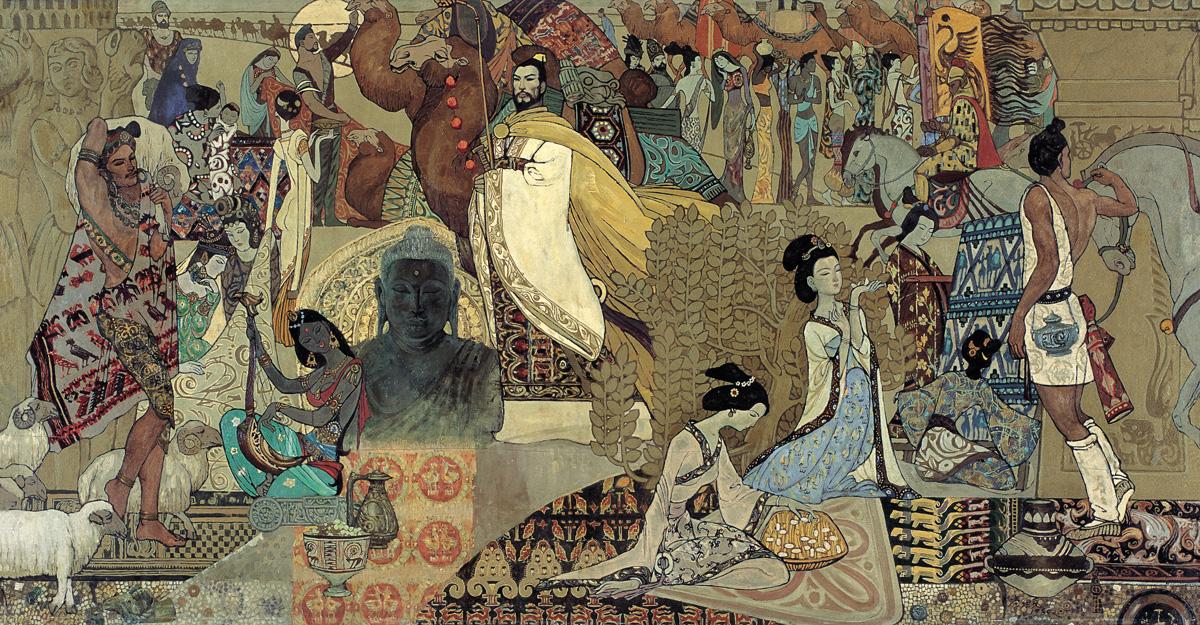Agricultural exchanges and the Silk Road

The artist Li Tanke’s oil painting The Silk Road reflects the exchanges between Eastern and Western civilizations. Through the Silk Road, the techniques of sericulture and other agricultural products of China have been transported to other countries.
Chinese agriculture laid the foundations for the Chinese civilization. This in turn allowed for a production-based material and spiritual culture, and exerted a far-reaching influence on the world.
Both the land and maritime Silk Roads allowed for the spread of this culture. Although the agricultural practices of various regions spread across the world at different times, all contributed to world history. They mutually interacted with each other and established a form of “globalization” of world agricultural civilizations.
China is one of the birthplaces of the global agriculture, and agricultural products are the main exports of China that spread to other countries. It is no exaggeration to say that agricultural exchanges, as the most significant part of ancient Chinese and foreign exchanges, shoulder the entire burden of preserving global agricultural civilization. These agricultural exchanges are carried out through the land and maritime Silk Road. In this sense, the Silk Road builds a bridge of communication between China and foreign countries.
The contributions of China’s four great “agricultural inventions”—rice, soybeans, tea growing and sericulture (the production of raw silk by raising silkworms) —to humanity’s survival and development are not inferior to the renowned four major inventions: the compass, gunpowder, papermaking and movable-type printing.
In 2016, the Chinese Academy of Sciences announced a comprehensive list of ancient China’s significant scientific and technological inventions, which included 88 items. Rice growing, soybean growing, silkworm breeding, silk reeling and tea-growing are impressive entries on the list, having played a key role in world history.
The Silk Road played a key role in spreading rice from China to surrounding countries. Many countries learned rice cultivation from China. The early spread of rice made those countries beneficiaries of early globalization. During the 18th century, rice became a supplementary food for ordinary people in the West. Because the yield per unit of rice was higher than that of wheat, it inevitably impacted the traditional wheat-growing areas—the typical example was Europe. Rice was not immediately blended into the European cropping system, but it influenced the daily life of peasants and ordinary people. Although rice was not the staple food for Western people, it acted as an important economic crop for earning foreign exchange through exporting, which drove Westerners to grow rice.
During the period of ancient Rome, the West learned about China’s silk and called China “Seres,” literally meaning the country of silk in Greek. At that time, Chinese silk could be sold for 600 grams of gold per pound in ancient Rome. The Silk Road gained its name by transporting this precious cloth to the West. Through the Silk Road, the techniques of sericulture have been transported to other countries as well. Approximately 5,000 years ago, the silk became extensively used as a textile material in China. Farming and sericulture have always been important parts of traditional Chinese agriculture.
Moreover, the spread of Chinese soybeans, the techniques for producing tofu and bean products, and tea growing methods enriched people’s diets along the Silk Road.
In short, the agricultural exchanges along the Silk Road are a highlight in the history of both China and surrounding nations, which enormously advanced the process of world agricultural civilizations.
Wang Siming and Li Xinsheng are from the Institution of Chinese Agricultural Civilization at Nanjing Agricultural University.
